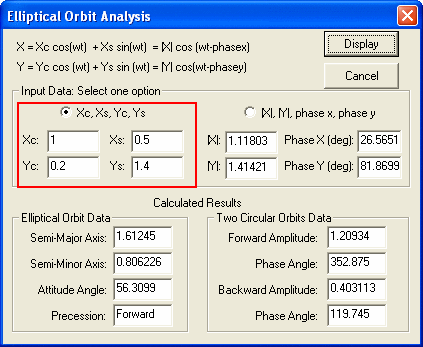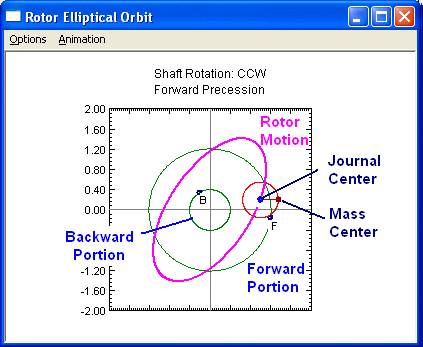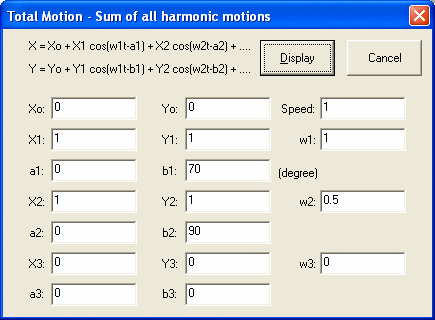
There are many types of excitations acting on a rotor system and they are frequently periodic, or can be approximated closely by the summation of periodic forces. The steady state response to a periodic excitation is a periodic motion. Any periodic motion can be represented by a series of harmonic motion. For a single harmonic motion, the rotor motion is an elliptical orbit, the total motion of a periodic excitation can be more complicated. For more information on the rotor orbit, please refer to the book by Chen and Gunter (2005), Chapter 2.
Elliptical Orbit
The rotor motion of most common interest is a harmonic motion with a whirl frequency. At each finite element station, the rotor translational motion has the form:

This represents an elliptical orbit. The elliptical orbit can be decomposed into two circular orbits: one is a forward circular orbit and the other is a backward circular orbit.


Total Motion


Copyright © 2014-2017